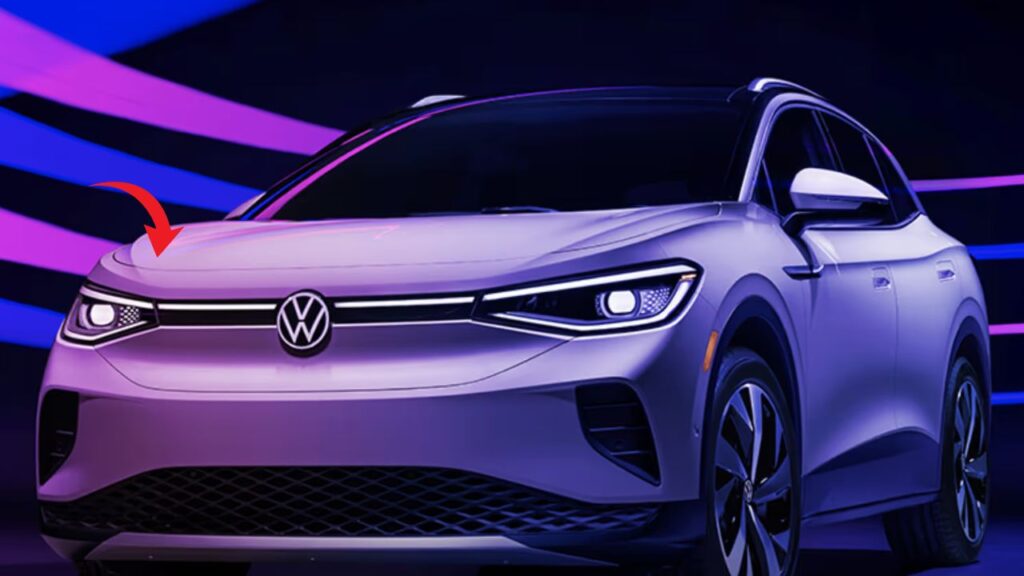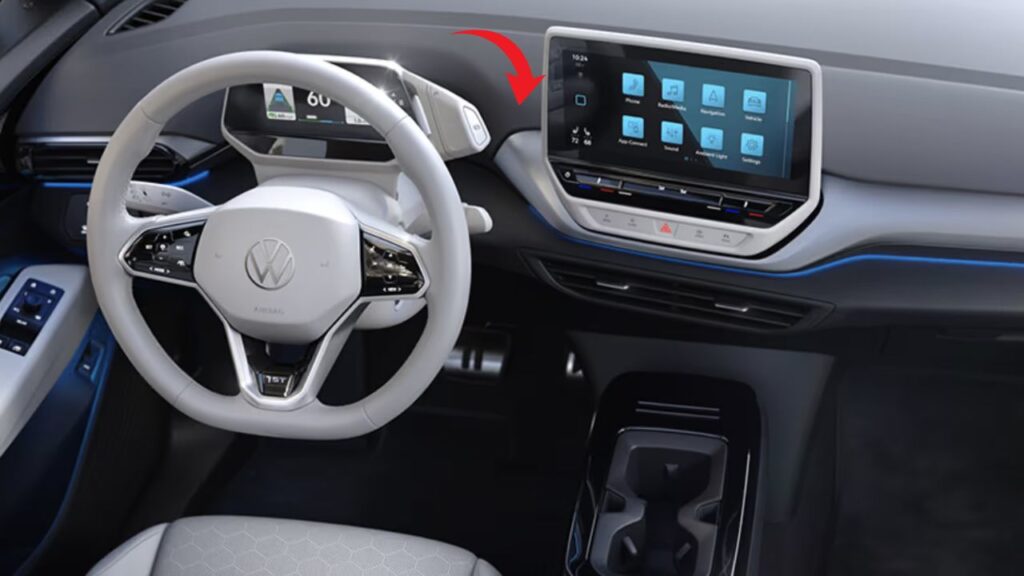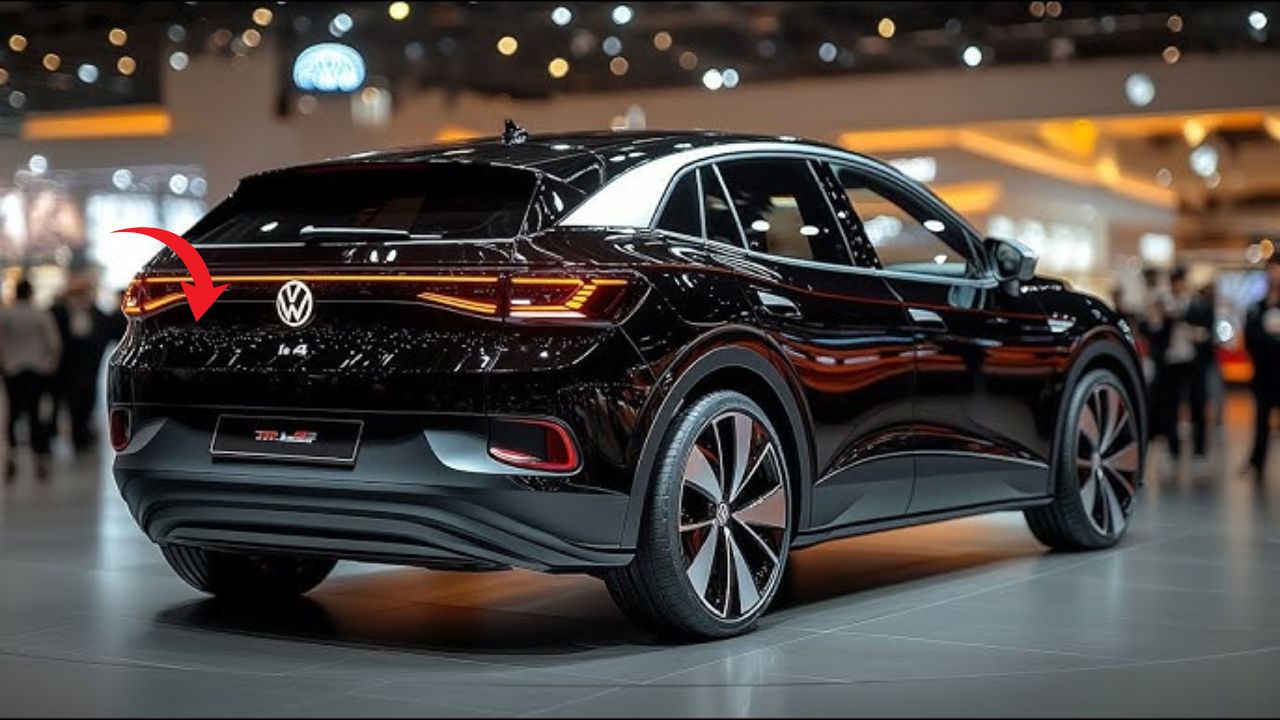The electric SUV market has been Tesla’s playground for years, but 2025 brings serious competition. Volkswagen’s updated ID.4 arrives with improvements that directly address the Model Y’s market dominance.
This isn’t just another electric vehicle hoping to catch scraps from Tesla’s table. The 2025 ID.4 represents VW’s mature understanding of what electric SUV buyers want.

Design Evolution That Matters
The 2025 ID.4’s exterior design language speaks fluently of modern electric vehicles. Clean lines and aerodynamic efficiency take priority without sacrificing the SUV proportions buyers expect.
Subtle updates from previous model years refine rather than revolutionize the overall aesthetic. VW has resisted the temptation to chase every design trend that emerges.
Exterior Refinements
LED lighting technology receives updates that improve both function and visual appeal. Daytime running lights create a distinctive signature that identifies the ID.4 from considerable distances.
Body panel gaps and overall fit-and-finish quality demonstrate VW’s manufacturing expertise. Traditional automotive quality standards apply to electric vehicles just as rigorously.
Interior Space Utilization
Electric vehicle architecture allows interior packaging that internal combustion engines simply cannot match. The ID.4 maximizes passenger and cargo space within its exterior dimensions.
Rear seat passengers benefit from genuinely usable legroom and headroom figures. Three-across seating becomes feasible for shorter trips when necessary.
Performance Specifications That Compete
The 2025 ID.4’s powertrain delivers performance figures that put it in direct competition with Tesla’s offering. Acceleration times satisfy performance-oriented buyers without compromising efficiency.
Single and dual-motor configurations provide options for different performance and budget requirements. All-wheel drive availability addresses weather and traction concerns effectively.
Acceleration and Power Delivery
Electric motor characteristics provide instant torque delivery that transforms the driving experience. Highway merging and city acceleration happen with confidence rather than hesitation.
Power delivery remains smooth and linear throughout the acceleration range. Unlike some competitors, the ID.4 doesn’t surprise drivers with unexpected power surges.
Handling and Ride Quality
Suspension tuning balances comfort with control in ways that suit SUV buyer expectations. Family hauling duties don’t require sacrificing driving enjoyment completely.
Steering feel provides adequate feedback without becoming overly heavy or artificial. The ID.4 drives like a refined SUV rather than trying to imitate sports car characteristics.
Range and Charging Performance
Real-world range figures matter more than EPA estimates for most buyers. The 2025 ID.4’s battery capacity aims to eliminate range anxiety for typical driving patterns.
Cold weather performance receives attention that reflects real-world usage conditions. Winter driving doesn’t devastate range estimates as dramatically as some early electric vehicles.
Charging Speed and Infrastructure
Fast-charging capability keeps pace with expanding charging network infrastructure. Cross-country travel becomes practical rather than requiring military-precision planning.
Home charging integration works seamlessly with standard residential electrical systems. Most daily driving requirements complete with overnight charging at home.
Battery Technology Advancement
Improved battery chemistry balances energy density with longevity considerations. Years of ownership shouldn’t bring dramatic capacity degradation concerns.
Thermal management systems protect battery health in extreme temperature conditions. Australian summers won’t compromise the power source that enables everything else.
Technology Integration Philosophy
Modern buyers expect sophisticated infotainment systems that rival smartphone capabilities. The ID.4’s tech package delivers connectivity features without overwhelming complexity.
Over-the-air update capability ensures software features improve throughout ownership. Today’s purchase won’t become obsolete as rapidly as previous technology generations.
Infotainment System Performance
Touchscreen response speed and menu logic receive priority attention from VW’s engineers. Frustrated passengers and drivers compromise safety and satisfaction equally.
Smartphone integration works reliably across different devices and operating systems. Apple CarPlay and Android Auto connectivity function without requiring advanced degrees.
Driver Assistance Features
Comprehensive safety technology comes standard rather than appearing as an expensive option. Modern crash avoidance systems provide protection that previous generations couldn’t imagine.
Adaptive cruise control and lane-keeping assistance reduce driver fatigue effectively. Long-distance travel becomes less stressful when technology handles routine tasks.
Model Y Comparison Analysis
Tesla’s Model Y established the electric SUV segment through early market entry. However, traditional automaker competition brings different strengths and approaches.
Build quality and interior materials represent areas where VW potentially surpasses Tesla’s offerings. Traditional automotive manufacturing experience shows in panel gaps and component fit.
Interior Quality Differences
Materials selection and assembly quality reflect VW’s decades of automotive manufacturing experience. Soft-touch surfaces appear where passengers actually contact them regularly.
Ergonomic considerations receive attention that comes from understanding human factors. Controls fall naturally to hand without requiring visual confirmation.
Service and Support Networks
VW’s established dealer network provides service accessibility that Tesla’s company-owned model cannot match everywhere. Rural and suburban buyers benefit from local service availability.
Parts availability and repair expertise exist within the traditional automotive service infrastructure. Mechanical complexity doesn’t exceed typical automotive technician capabilities.
Pricing Strategy and Value Proposition
The 2025 ID.4’s pricing structure competes directly with Model Y configurations. VW hasn’t chosen to undercut Tesla dramatically, instead focusing on feature parity.
Standard equipment levels include features that Tesla charges extra for separately. The total ownership cost calculation becomes more complex than simple purchase price comparison.
Trim Level Structure
Multiple specification levels ensure buyers can find appropriate feature combinations. Entry-level variants still include essential modern conveniences and safety systems.
Higher trim levels add luxury touches without pushing prices into premium territory unnecessarily. Leather seating and advanced audio systems remain accessible to mainstream buyers.
Incentive and Rebate Eligibility
Electric vehicle incentives vary significantly by location and change frequently. However, the ID.4 generally qualifies for available purchase incentives and tax credits.
Lease programs often provide additional financial advantages for electric vehicles. Monthly payment calculations may favor leasing over purchasing depending on individual circumstances.
Market Positioning Strategy
VW targets buyers who want electric SUV capability without Tesla’s polarizing brand associations. Some consumers prefer traditional automotive brand approaches to vehicle ownership.
Conservative buyers who appreciate evolutionary rather than revolutionary change find comfort in VW’s approach. The ID.4 doesn’t demand lifestyle changes that some electric vehicles seem to require.
Target Customer Demographics
Affluent suburban families represent the primary target market for electric SUVs. These buyers can afford premium pricing while valuing environmental responsibility.
Empty nesters and small families also show strong interest in electric SUV packages. Cargo space and seating flexibility matter more than maximum passenger capacity.
Brand Loyalty Considerations
VW’s established customer base provides the foundation for ID.4 sales success. Existing VW owners understand the brand’s strengths and weaknesses intimately.
Conquest sales from other premium brands also contribute to overall success. Some BMW and Audi owners find VW’s value proposition compelling.
Australian Market Adaptation
Australian conditions test electric vehicles thoroughly through extreme temperatures and long distances. The ID.4’s systems receive specific calibration for local conditions.
Right-hand drive conversion doesn’t compromise interior space or ergonomic considerations. Australian buyers receive the same interior packaging advantages as other markets.
Local Infrastructure Considerations
Australia’s charging network expands rapidly along major travel corridors. However, remote area coverage still requires careful trip planning for longer journeys.
Urban charging infrastructure density supports daily driving patterns effectively. Most Australian electric vehicle owners rarely encounter charging availability problems.
Climate and Environmental Factors
Extreme heat testing ensures battery and cooling systems perform reliably. Australian summers represent some of the most challenging conditions any electric vehicle faces.
Dust and remote area driving conditions receive attention during development. Sealed electrical components prevent environmental contamination problems.
Competitive Landscape Evolution
The electric SUV market grows more competitive each year as established automakers enter seriously. Tesla’s early advantages diminish as alternatives multiply.
Traditional automotive strengths like build quality and service networks become competitive advantages. Electric powertrains level the technology playing field significantly.
Future Competition Threats
Korean and Japanese automakers also target the electric SUV segment aggressively. Hyundai, Kia, and others bring strong value propositions to market.
Luxury brands descend into mainstream pricing territory occasionally. BMW and Mercedes electric SUVs sometimes overlap with premium mainstream offerings.
Market Share Projections
Electric SUV market share continues growing as buyers overcome range and charging concerns. The segment represents the fastest-growing portion of electric vehicle sales.
Traditional SUV buyers transition to electric alternatives as capabilities improve. The ID.4 positions itself to capture this transition effectively.
Long-term Ownership Considerations
Electric vehicle maintenance requirements differ significantly from internal combustion engines. Fewer moving parts mean reduced service frequency and complexity.
Battery replacement costs remain a concern for long-term ownership planning. However, battery longevity continues improving with each generation of technology.
Warranty Coverage Analysis
VW’s electric vehicle warranty provides competitive coverage periods and component protection. Battery degradation protection offers peace of mind for early adopters.
Service plan availability helps budget maintenance costs over ownership periods. Predictable expenses make electric vehicle ownership more financially manageable.
Resale Value Expectations
Electric vehicle resale values remain somewhat unpredictable due to rapid technological advancement. However, established brands like VW typically hold value better than newcomers.
Model year updates and feature improvements affect used vehicle desirability significantly. The 2025 ID.4’s improvements should support stronger resale performance.
Environmental Impact Assessment
Zero tailpipe emissions provide immediate air quality benefits in urban environments. However, total environmental impact depends on electricity generation sources.
Manufacturing environmental costs for electric vehicles often exceed traditional vehicles initially. However, operational emissions typically offset manufacturing impacts within reasonable timeframes.
Sustainable Materials Integration

Interior materials increasingly incorporate recycled and renewable sources. VW’s sustainability commitments extend beyond powertrain considerations alone.
Battery recycling programs prepare for end-of-life vehicle processing. Rare earth metals and lithium recovery are becoming increasingly important economically.
The 2025 VW ID.4 brings mature electric SUV execution to a market Tesla has dominated. Traditional automotive expertise combines with electric technology effectively.
Success depends on execution quality and real-world performance delivery. However, VW appears ready to claim meaningful market share from Tesla’s dominance.
Frequently Asked Questions
How does the 2025 ID.4’s range compare to the Tesla Model Y?
The ID.4 offers competitive range figures that closely match Model Y performance in real-world driving conditions.
What’s the starting price difference between ID.4 and Model Y?
Pricing remains competitive between the vehicles, with final costs depending on selected options and available incentives.
Does the ID.4 support fast charging like Tesla Superchargers?
Yes, the ID.4 supports multiple fast-charging standards and works with various charging networks beyond Tesla’s system.

